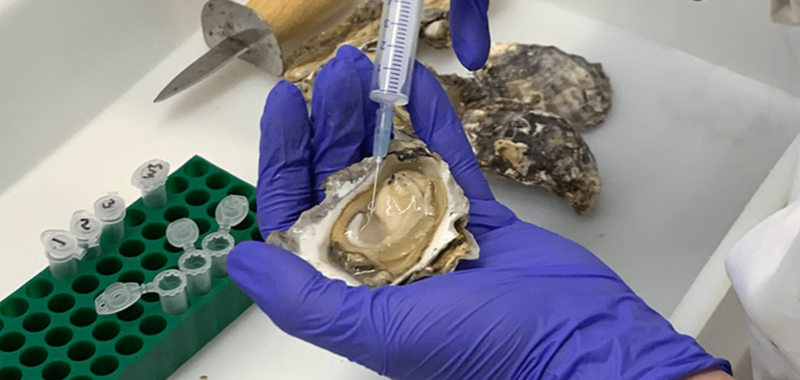In the future, oysters might help in the global fight against antibiotic-resistant bacteria. A protein found in the blood–or hemolymph–of the Sydney rock oyster (Saccostrea glomerata) appears to kill bacteria, while also increasing the effectiveness of some of the antibiotics.. The findings are detailed in a study published January 21 in the journal PLOS ONE and could be used for developing new ways to fight bacterial infections.
Over the past half-century, bacteria have developed resistance to many conventional antibiotics used to treat illnesses like pneumonia and strep throat due to their overuse and misuse. A 2024 study predicts that antimicrobial resistance will cause 40 million deaths by 2050. Discovering and developing new antibiotics is a crucial public health and safety measure.
Looking to briny bivalves and other organisms for medical help is not without precedent. Oyster components have been used to treat respiratory infections in some traditional medicines. Their blood has also been shown to exhibit anti-viral activity. Over 90 percent of antibiotics that are currently in use are derived from nature in some way, including the life-saving penicillin.
“Most organisms have natural defence mechanisms to protect themselves against infection,” Kirsten Benkendorff, a study co-author and interdisciplinary marine scientist at Southern Cross University in Australia, said in a statement. “Oysters are constantly filtering bacteria from the water, so they are a good place to look for potential antibiotics.”

CREDIT: Southern Cross University
A 2024 study by the same team identified a protein found in the hemolymph of the Sydney rock oyster that inhibits Streptococcus pneumoniae. This bacterium causes respiratory infections in humans, including tonsilitis and pneumonia and is a leading cause of death in children under five and hospitalization in older adults.
Bacteria like S. pneumoniae that cause infection often escape from antibiotics and the immune system by forming biofilms to protect themselves. These biofilms are communities of microorganisms that attach themselves to surfaces in a sticky, protective matrix. The study found that oyster blood can kill bacterial pathogens in the biofilms.
“The oyster hemolymph proteins were found to prevent biofilm formation and disrupt biofilms, so the bacteria remain available to antibiotic exposure at lower doses,” said Benkendorff. “The hemolymph contains a mixture of proteins with known antimicrobial properties. These may act to directly kill the bacteria, as well as preventing them from attaching to the cell surface.”
[ Related: In 1928, the discovery of ‘mold juice’ would go on to save 500 million lives. ]
Crucially, the oyster hemolymph proteins were not toxic to human lung cells. This means it might be possible to optimize the proteins to create a safe and effective dose. While a new antibiotic developed from oyster blood is still quite some time away, the findings are a next step in developing new methods for treating serious infections.
“It provides great opportunities for collaboration between researchers, aquaculture and pharmaceutical industries,” said Benkendorff. “In the meantime, slurping oysters could help keep the respiratory bugs away. Oysters contain zinc which boosts the immune system and they have really good polyunsaturated fatty acids and vitamins that also help modulate immunity.”


